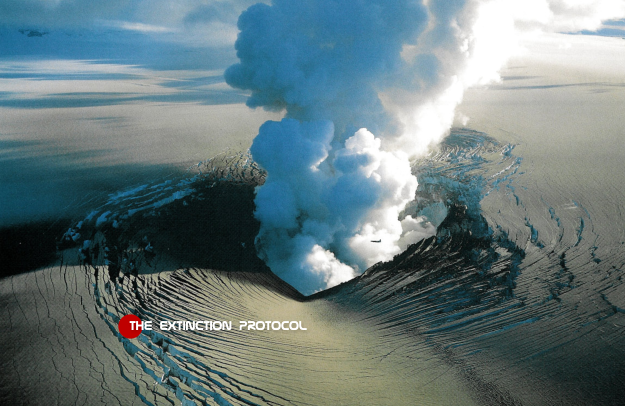
Glacial volcanoes sound like an oxymoron. But Iceland’s Vatnajökull ice cap, Europe’s largest by volume, covers many active volcanoes, including the country’s most frequently erupting one, Grímsvötn. Nine years after its last eruption in 2011, which closed Icelandic airspace, Grímsvötn appears poised for yet another, according to the Icelandic Meteorological Office’s (IMO). A Grímsvötn eruption—occurring roughly every 5-10 years—blasts through the glacial ice enclosing the volcano and the magma-ice interactions create a stunning explosion. “The lava melts the ice, it flashes into steam. There is a tremendous amount of energy being released in split seconds,” Ronni Grapenthin, a geophysicist at the University of Alaska, described to GlacierHub. Grímsvötn is also infamous as the source of the seven-month long Laki fissure eruption in 1783, which caused a famine that claimed 20 percent of Iceland’s population and lowered Northern Hemisphere temperatures by an estimated 1°C.
While scientists are fairly certain another eruption is coming, forecasting the timing, magnitude and nature of eruptions is challenging because “each volcano is different and they behave differently, and you can have different behavior from one eruption to the other,” said Sigrun Hreinsdottir, a geodetic scientist at GNS Science in New Zealand. However, because Grímsvötn erupts so frequently, scientists see patterns that suggest another eruption is imminent. “Currently we have a state of the volcano which is very similar to the pre-eruptive conditions before 2011 and 2004 [eruptions],” Benedikt Ofeigsson, a geoscientist at the IMO, told GlacierHub.

A team of scientists spanning Alaska to Iceland to New Zealand is carefully monitoring Grímsvötn. A high-precision GPS on the ground measures volcanic deformation—the movement of the ground—in real time. As magma flows into the volcano from below, the ground expands outwards from the magma chamber, like a balloon. According to Ofeigsson, Grímsvötn is “pretty much inflated to the same point as prior to 2011 [eruption] so it’s showing all the signs of an eruption well within the next month or year.” An additional piece of information suggests an impending Grímsvötn eruption: gas measurements. When magma nears the surface, the gases originally dissolved in the magma escape. “It’s a lot like opening a soda bottle. When you release the pressure, the gases come out,” said Terry Plank, a volcanologist at Columbia University’s Lamont-Doherty Earth Observatory. Since 2012, the IMO has periodically made gas measurements at Grímsvötn, but in early June, they “measured very high concentrations of SO2, CO2 and H2,” which Ofeiggson noted are unusual for Iceland. These measurements indicate that an eruption is near because the magma is just below the surface.
“When the volcano is ready to erupt, the eruption can be triggered by the flood,” Ofeigsson added. Grímsvötn has “a hair-trigger sensitivity to pressure,” so the pressure release from the removal of the lake water can start the eruption, explained Dave McGarvie, a volcanologist at Lancaster University. Therefore, for the first time, scientists are monitoring Grímsvötn’s subglacial lake level in real time. Because jökulhlaups triggered many past Grímsvötn eruptions, including in 2004, scientists expect the next eruption will also follow the flood. Despite the short window of warning—and Grímsvötn’s history of devastating eruptions—the next eruption is not expected to be bad. Every 150-200 years, Grímsvötn has a large eruption. Since the last big one was in 2011, scientists expect the upcoming eruption to be fairly small. –Physics

Comments
Post a Comment